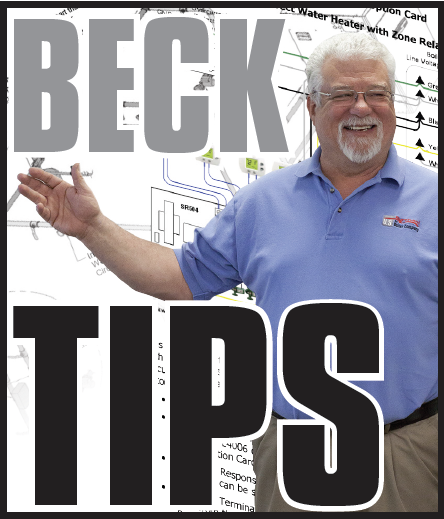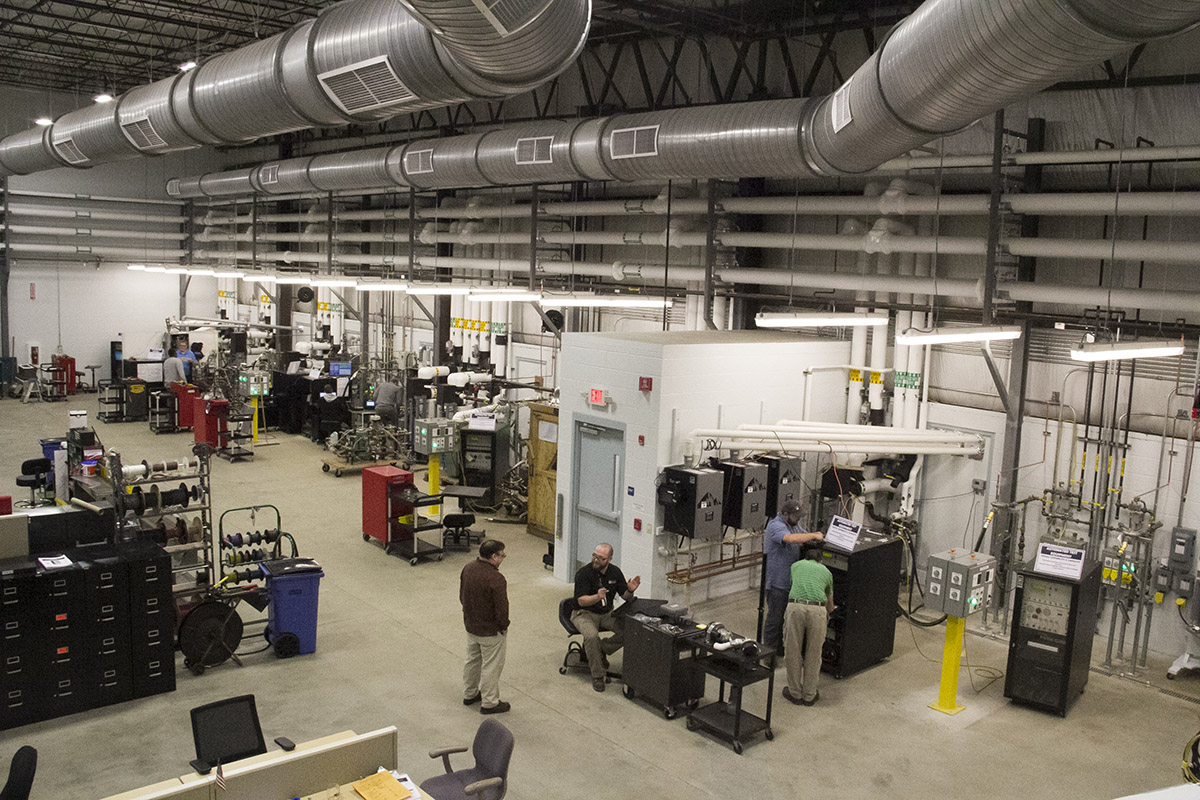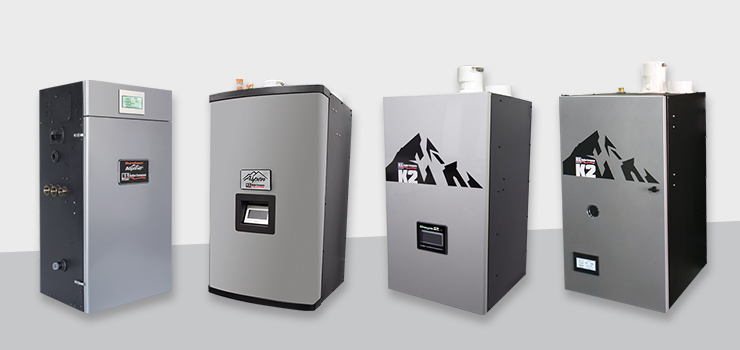 By Ron Beck, Outside Technical Advisor and Manager of Training for U.S. Boiler Company
By Ron Beck, Outside Technical Advisor and Manager of Training for U.S. Boiler Company
You may not realize it, but as heating contractor, you have a tremendous influence in what our company makes. A good example of this can be found in how our condensing boiler line has evolved over the past twelve years. In the beginning, we offered the CHG and Freedom condensing boilers. These products had an aluminum monoblock heat exchanger. Customers asked for a stainless steel counterpart, so we got to work and introduced the Alpine in 2008. It had a 5:1 turndown firing rate and the same MCBA controller as the Freedom. As the Alpine evolved, we offered a touch screen interface to offer more simplicity in the boiler control. The Alpine was followed by the 5:1 K2 watertube condensing boiler, and then the K2 firetube condensing boiler. These products were enhanced after their introduction by suggestions for including additional kinds of venting and other upgrades.
In response to requests for 10:1 turndown, we introduced the K2WT and the Aspen condensing boilers. Based on previous feedback, both of these products were vented with the same materials and could work in many venting applications. They can be vented with CPVC/PVC, flexible stainless steel, ridged polypro and flexible polypro. The application can be two pipes through the sidewall, which extend vertically up the exterior of the structure up to 7’ if needed. They can also do 2-pipe through the roof, or concentric vertical and concentric horizontal with a pipe in a pipe or the sidewall low-profile look. You can install vent pipe as a vertical vent and air intake from a sidewall.
We will try our best
While we try our best to accommodate what our installers ask for, there are times that we must refuse… but there are sufficient reasons for that. The one thing we cannot do on our condensing boilers is use indoor air for combustion. On these products, outdoor air is much better than indoor air for combustion. As houses get tighter and tighter, we may struggle to replenish enough make-up air. In addition, the possible presence of chemicals suspended in that indoor air could be detrimental to the boiler, or in a worst-case scenario, downright dangerous. A list of possible indoor air contaminants includes methane gas from dried out sewer drains, cleaning agents, chlorines, paint vapor, paint thinners, fertilizer and sodium chloride for water softeners, calcium chloride found in ice melt and antistatic fabric softener sheets.
![]() Recently, we were asked for a 95%, 10:1 turndown combi, so we introduced the K2 Combi (K2WTC). We offer the K2 Combi in two sizes, a 135 and 180 MBH, which supply 3.3 and 4.5 gpm of domestic hot water (DHW) at a 70°F rise. Venting is very similar to the Alpine, Aspen and K2WT. There is a boiler loop circulator installed inside the boiler jacket for central heat (CH) and DHW. The boiler utilizes a three-way valve for selecting CH and DHW. The DHW has a flat plate heat exchanger also installed inside the boiler jacket. The DHW takes priority over the central heat. This can be adjusted between 105°F and 140°F if a mixing valve is used. The default priority time is 60 minutes and has a range of 30 minutes to 120 minutes.
Recently, we were asked for a 95%, 10:1 turndown combi, so we introduced the K2 Combi (K2WTC). We offer the K2 Combi in two sizes, a 135 and 180 MBH, which supply 3.3 and 4.5 gpm of domestic hot water (DHW) at a 70°F rise. Venting is very similar to the Alpine, Aspen and K2WT. There is a boiler loop circulator installed inside the boiler jacket for central heat (CH) and DHW. The boiler utilizes a three-way valve for selecting CH and DHW. The DHW has a flat plate heat exchanger also installed inside the boiler jacket. The DHW takes priority over the central heat. This can be adjusted between 105°F and 140°F if a mixing valve is used. The default priority time is 60 minutes and has a range of 30 minutes to 120 minutes.
This boiler can only respond to one demand (either space heat or domestic hot water) at a time. When there are simultaneous calls for space heat and domestic hot water, the domestic hot water demand will have priority for the duration of the “priority time” setting. At the end of that time, the boiler will respond to the call for space heat and no domestic hot water will be available until there is an interruption in one of the two demands. During the priority time itself, any interruption in the DHW or space heat demand will also “reset the clock”; both demands need to be present on a continuous basis for the priority time to expire. If there are no demands for CH and DHWm, there is no priority timeout. Please note that the installation manual states that you must install an automatic mixing valve to control the DHW temperature to the faucet for scalding protection.
Faster product development
In order to speed development for all of these product improvement requests, we invested into a new state of the art boiler lab about five years ago. While this space is devoted to engineering our entire product line, most of our recent efforts have been directed towards our condensing lines. We have hired additional engineers, some of which are dedicated to condensing boilers. We have also installed a special assembly and testing line to optimize manufacturing of these new products. So, as we look back since the introduction of our first condensing, we have dedicated a very large portion of our resources, both dollars and personnel to the modulating/condensing boilers. Your input has given us the roadmap, which we continue to follow to this day.

Above: The updated engineering lab provides additional space to house a growing staff and offers greater flexibility and capability for efficiency and operational testing of home heating boilers in a state-of-the-art laboratory.
So, I have only one question… what else would you like? Please contact us with your ideas and we will do our best to oblige. Of course, we can’t do everything for everybody, but we will certainly weigh them out and see if we can make it happen. Thanks to all that have kept us in the loop to date and we hope to hear from you in the future.
Ron Beck is Outside Technical Advisor and Manager of Training for U.S. Boiler Company, where he’s been since 1998. Ron’s 34 years of experience in the heating industry include climbing the ranks of aHVAC company, from apprentice to service manager. Ron can be reached at: RBeck@usboiler.net

